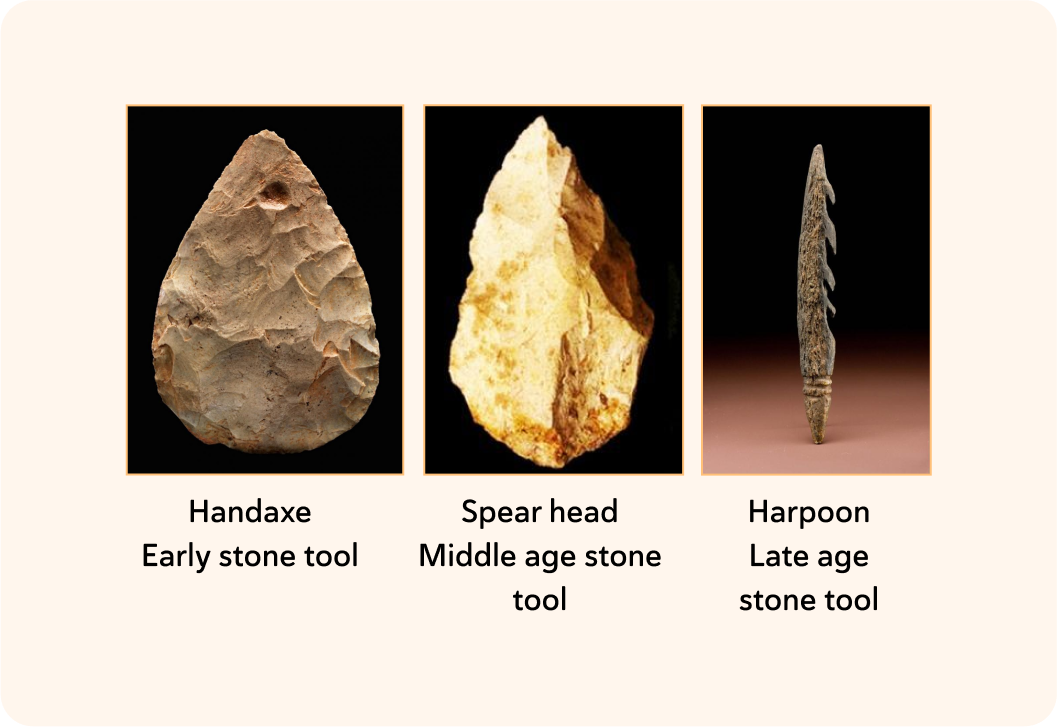YOU ARE LEARNING:
Stone Tools and Evolution

Stone Tools and Evolution
There are further evidence for human evolution as seen in stone tools and their development in the past.
Humans and their ancestors have been using stone tools for a long time, but how long ago do you think the very earliest tools were first used?

The earliest tools we have found date from about 2.5 - 2.6 million years ago. What might these have been used for?

A simple cutting edge is easy to make by chipping away at some stone, especially flint. From this it is possible to make a simple hand held knife or axe. What do you think this tool might have been used for? Pick all the options you think are correct.

You can select multiple answers
Looking at these examples, you see how the design and the craftsmanship of the tools have improved over time.
The early hand-axe is from the Palaeolithic Age, around 2 million years ago.

The spear head is much later, from the middle stone-age, over 50,000 years ago. How can we see that this might be from a later date?
A) Cleaner B) Sharper C) Finer workmanship


The harpoon is much later still, between 50,000 - 10,000 years ago.
How can we see from the artefact (the item) that this is probably later than the other two?

You can select multiple answers
The advances in design and the skill needed to make these items provides evidence for the evolution of which part of the human body?

The evidence for the development of the brain from looking at how tools where made and used is what type of evidence?

Indirect evidence, such as the link between tool complexity and brain capacity should be supported by other evidence. Which of these can be linked to help support this idea?

It is possible to date stone from the radioactive isotopes in the minerals. Why can this not be used to age an artefact made from stone?

Unlike stone, organic material (anything that was once alive), can be dated to when it died. What technique can be used to date this material?

Items like the harpoon and the spear-head were normally attached to a wooden stick. Sometimes these are found with the tool.
Occasionally, remains of food (like bones) are found near the tool. How can these help date the tools?
A) These show how the tool was used. B) These can be dated by radio-carbon dating. C) These can be dated from the uranium isotopes.

Some of the items from the same environment as the tool can be dated accurately. The assumption then is that the tool is the same age. Is this direct or indirect evidence of the age of the tool?

